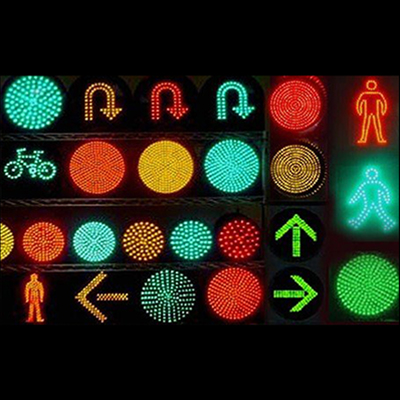After decades of technological development, the luminous efficiency of LED has been greatly improved. Because of its good monochromaticity and narrow spectrum, it can directly emit colored visible light without filtering. It also has the advantages of high brightness, low power consumption, long service life, fast startup, etc. it can be repaired for many years, greatly reducing the maintenance cost. With the commercialization of high brightness LED in red, yellow, green and other colors, LED has gradually replaced the traditional incandescent lamp as a traffic signal lamp.
At present, high-power LED is not only applied in high accessory value products such as automotive lighting, lighting fixtures, LCD backlight, LED street lamps, but also can obtain considerable profits. However, with the advent of the replacement of old-fashioned ordinary traffic lights and immature LED signal lights in previous years, the new bright three color LED traffic lights have been widely promoted and applied. In fact, the price of a complete set of LED traffic lights with perfect functions and high quality is very expensive. However, due to the important role of traffic lights in urban traffic, a large number of traffic lights need to be updated every year, which leads to a relatively large market. After all, high profits are also conducive to the development of LED production and design companies, and will also produce benign stimulation for the entire LED industry.
LED products used in the field of transportation mainly include red, green and yellow signal indication, digital timing display, arrow indication, etc. The product requires high-intensity ambient light during the day to be bright, and the brightness should be reduced at night to avoid dazzling. The light source of the LED traffic signal command lamp is composed of multiple LEDs. When designing the required light source, multiple focal points should be considered, and there are certain requirements for the installation of the LED. If the installation is inconsistent, it will affect the uniformity of the luminous effect of the luminous surface. Therefore, how to avoid this defect should be considered in the design. If the optical design is too simple, the light distribution of the signal lamp is mainly guaranteed by the perspective of the LED itself, Then the requirements for light distribution and installation of LED itself are relatively strict, otherwise this phenomenon will be very obvious.
LED traffic lights are also different from other signal lights (such as car headlights) in light distribution, although they also have light intensity distribution requirements. The requirements of automobile headlamps on the light cut-off line are more stringent. As long as enough light is allocated to the corresponding place in the design of automobile headlights, without considering where the light is emitted, the designer can design the light distribution area of the lens in sub regions and sub blocks, but the traffic signal lamp also needs to take into account the uniformity of the light effect of the whole light-emitting surface. It must meet the requirements that when observing the light-emitting surface of the signal from any working area used by the signal lamp, the signal pattern must be clear and the visual effect must be uniform. Although the incandescent lamp and halogen tungsten lamp light source signal lamp have stable and uniform light emission, they have defects such as high energy consumption, low service life, easy to produce phantom signal display, and color chips are easy to fade. If we can reduce the LED dead light phenomenon and reduce the light attenuation, the application of high brightness and low energy consumption led in the signal lamp will definitely bring revolutionary changes to the signal lamp products.
Post time: Jul-15-2022







